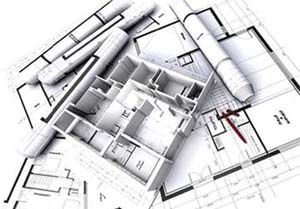 |
|
| Appunti tecniche |
|
 |
|
| Appunti tecniche |
|
| Visite: 898 | Gradito: |
Leggi anche appunti:Preamplificatore non reazionatoPreamplificatore non reazionato · Premesse L'amplificatore operazionale: applicazioni e caratteristicheL'amplificatore operazionale: applicazioni e caratteristiche - Premessa - Il Comparatore con isteresiComparatore con isteresi Nei rivelatori di zero e nei comparatori gią visti |
 |
 |
BASIC CONSTRUCTION
Essentially, a transformer consists of two or sometimes more windings of insulated wire wound on a common core of ferromagnetic material, the outstanding exception being air-core transformers for use at high frequencies beyond the audio range.
The two windings usually have a different number of turns. The winding with the greater number of turns will be the high-voltage winding (H.V.), the other winding the low-voltage winding (L.V.). The ratio of the turns in the two windings is called the ' voltage ratio or the transformation ratio. By properly proportioning the number of primary and secondary turns, almost any desired voltage ratio can be obtained. In other words for any given value of primary applied voltage, any desidered value for the secondary voltage can be obtained by adopting a suitable number of turns for the secondary. Either winding may be used as the primary, if connected to a source of proper voltage. Thus, a transformer may function either to step up or step down the voltage.
The core plays a very important role in a transformer. For efficient operation it is essential that the cores of transformers be constructed of material possessing good magnetic properties, and are laminated in order to reduce losses caused by, eddy-currents. Since silicon steel, in addition to possessing these properties, is a relatively lowcost material, it is used for the cores of practically all transformers except the small transformers used in communication work at high frequencies. Some of these transformers have cores made by compressing a ferromagnetic alloy, such as permalloy, in powdered form.
Since some energy is converted into heat energy through conductor resistance of windings and hysteresis and eddy current phenomena in the iron core of a transformer, provision must be made in its design for satisfactory cooling. The difficulty of cooling electrical apparatus generally increases with size, energy losses increasing roughly as the cube of the dimensions. Transformers of medium and large kVA capacity therefore have their windings immersed in a liquid which acts both as a cooling and an insulating medium. Oil-immersed transformers are enclosed in a sheet-steel tank, the oil cooling being effected by self-cooling, water-cooling, forced-aircooling, or forced-oil-cooling means. Since the basic constructions as above shown, requires no moving parts, the transformer is a very rugged device which requires the minimum amount of repair and maintenance.
RECTIFIERS
A rectifier is a component which allows current to flow one way but not the other. Thus a rectifier is employed for converting a.c. into d.c. by inversion or suppression of the alternate half-waves flowing in the direction not allowed by the component.
Rectifiers have found many uses in the most
diverse fields. Rotor rectifiers serve to convert a.c. at 50-300 Hz into
Rectifiers are widely used in metal-making, for example in aluminium reduction plants, in mechanical engineering and in chemical industries, whenever d.c. is required. In electronic instruments, rectifiers are used quite frequently for measurement purposes Most modern electronic meters an instruments use a moving coil, which can measure average current in only one direction. To measure a.c., the moving-coil instrument needs a rectifier to make all the current flowing through the coil move in the same direction.
Vacuum tubes' were used for many years as rectifiers.
Nowadays semiconductor devices, such as selenium rectifiers and silicon rectifiers, are commonly in use, in current ratings up to several hundred amperes. They are made very robust, with great resistance to shock and vibration, from parts which do not wear out in service. Their small size and weight, combined with their reliability, have made possible a very compact design of efficient components.
In its simplest form, the purpose of a semiconductor rectifier is the conversion of a.c. into d.c. In this case it is called an uncontrolled rectifier. If a semiconductor rectifier is made also for an effective regulation of output voltage or current or some other effects, it is called a controlled rectifier or thyristor.
GENERAL PRINCIPLES OF ELECTRIC TRANSFORMERS
In the most general sense a, transformer is a device which converts through electromagnetic means electrical energy from one circuit into electrical energy in another circuit. The basic transformer construction consists of two windings electrically insulated from each other and wound on a common magnetic core. When one of the winding's is connected to an a.c. source, energy from they source is converted into magnetic energy stored in the core. Most of the flux of the magnetic field links with both the windings, i.e. it is mutual to the two windings. The changing mutual flux due to the a.c. on the winding connected to the source induces a voltage in the other winding. Thus energy of the magnetic field is reconverted into electrical energy in the second winding, whenever this is connected to a closed circuit.
The transformer is a very important piece of equipment in our electrical system. It makes possible the efficient conversion of electrical, energy at one voltage to electrical energy at any other voltage which is most suitable for that particular part of the system. The transformer is the device which has made possible the present-day large-scale developments in the efficient generation, transmission, and utilization of electrical power. Through its use electrical generation of energy can be effected at an economical voltage, then the voltage increased for satisfactory transmission over long distances, and finally reduced, at the points where the power is to be used, to any value suitable for the particular application.
If a transformer is used to deliver, a voltage greater than the voltage received it is called step-up transformer. If it is used to deliver a voltage less than the voltage received it is called step-down transformer. The winding that is connected to an electric source is called the primary winding, and the other winding, which receives its energy from the primary by magnetic coupling, is called secondary.
 |
| Appunti su: |
|
| Appunti Gestione |  |
| Tesine Ingegneria tecnico |  |
| Lezioni costruzione |  |